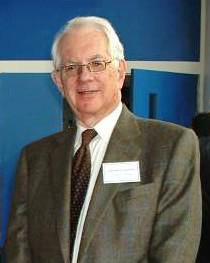Sheldon Glashow
| Sheldon Lee Glashow | |
|---|---|
 |
|
| Born |
December 5, 1932 New York City, New York, US |
| Nationality | United States |
| Fields | Theoretical Physics |
| Institutions |
Boston University Harvard University University of California, Berkeley |
| Alma mater |
Cornell University (BA) Harvard University (PhD) |
| Thesis | The vector meson in elementary particle decays (1958) |
| Doctoral advisor | Julian Schwinger |
| Known for |
Electroweak theory Georgi–Glashow model Criticism of Superstring theory |
| Notable awards | Nobel Prize in Physics (1979) |
| Spouse | Joan Shirley Alexander (m. 1972; 4 children) |
Sheldon Lee Glashow (/ˈɡlæʃoʊ/; born December 5, 1932) is a Nobel Prize winning American theoretical physicist. He is the Metcalf Professor of Mathematics and Physics at Boston University and Higgins Professor of Physics, Emeritus, at Harvard University, and is a member of the Board of Sponsors for the Bulletin of the Atomic Scientists.
Sheldon Lee Glashow was born in New York City, to Jewish immigrants from Russia, Bella (née Rubin) and Lewis Gluchovsky, a plumber. He graduated from Bronx High School of Science in 1950. Glashow was in the same graduating class as Steven Weinberg, whose own research, independent of Glashow's, would result in the two and Abdus Salam sharing the same 1979 Nobel Prize in Physics (see below). Glashow received a Bachelor of Arts degree from Cornell University in 1954 and a Ph.D. degree in physics from Harvard University in 1959 under Nobel-laureate physicist Julian Schwinger. Afterwards, Glashow became a NSF fellow at NORDITA and joined the University of California, Berkeley where he was an associate professor from 1962 to 1966. He joined the Harvard physics department as a professor in 1966, and was named Higgins Professor of Physics in 1979; he became emeritus in 2000. Glashow has been a visiting scientist at CERN, and professor at the University of Marseilles, MIT, Brookhaven Laboratory, Texas A&M, the University of Houston, and Boston University.
...
Wikipedia
